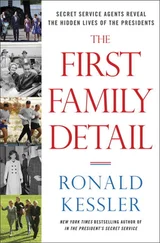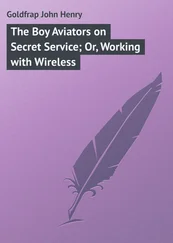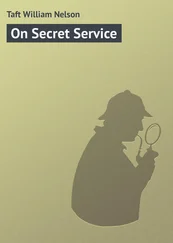That is not the way it’s supposed to happen.
“You know what the setting is, that the president will give a speech,” former Secret Service deputy director Danny Spriggs says. “They are not told what will happen. They don’t know if an attack will come, where it will come from, or what it will be.”
When asked about the practice of rehearsing supposedly spontaneous scenarios, Ed Donovan, a Secret Service spokesman, did not respond.
At the Rowley center, the Secret Service also likes to impress members of Congress with agents’ marksmanship. But what the agency doesn’t tell Congress is how agents are outgunned because the Secret Service continues to use the outdated Heckler & Koch MP5 submachine gun. In contrast, the army and other federal law enforcement agencies have switched to the newer and more powerful Colt M4 carbine.
While a counterassault team travels with the president and is armed with the SR-16—similar to the M4—other agents on a protective detail also need to be ready to repel an attack. Many of those agents are equipped with the MP5. In addition, all agents are armed with a SIG Sauer P229 pistol with the barrel modified to accommodate a .357 round instead of the standard smaller nine-millimeter round.
“The service, you would think, would be on the leading edge when it comes to weapons, and they’re just not,” says a current agent. “They’re still carrying MP5 submachine guns,” developed in the 1960s. “Guys from State Department are out there carrying M4s, which is a weapon that soldiers in Iraq and Afghanistan are carrying.” Developed in the 1990s, it is “much more powerful. It has better range and better armor-piercing capabilities,” the agent adds.
The army uses the M4 as its main weapon. The FBI trains agents to use both the MP5 and the M4. Even the Amtrak Police Department is equipped with the M4.
“You’re going to be getting attacked with AK-47 assault rifles, you’re going to be getting attacked with M4s,” an agent says. “We want to be able to match or better whoever’s attacking us. You want to get the same range or better. The problem is, if you’re getting a shootout in a motorcade, with the MP5, you’re shooting a pistol with a submachine gun round—you’re basically shooting a pistol round. You don’t want your rounds falling short and not even able to reach out to the bad guy. And that’s essentially what you’ve got going on with the weapons they have now.”
In fact, he says, “The nine-millimeter round fired by the MP5 does not even penetrate the most basic type of body armor available to the general public.”
“I laugh every time I go to training and we do motorcade attack scenarios,” another agent on a major protective detail says. “Our so-called attackers use the AK-47 as their weapon. When there is an attack and the bad guys open up with the AK-47s, it is deafening. You feel like you’re being ambushed in the Middle East. Then the Secret Service shift fires back with MP5s. By comparison, it sounds like little cap guns.”
In contrast to the M4, the MP5 used by the Secret Service does not have night-vision capability or mounted flashlights. Flashlights help agents identify a target at night, illuminate a dark room, and could be used to distract an enemy. By temporarily blinding assailants, they could give an agent an advantage in a confrontation.
“Without the ability to see at night, we are at a grave disadvantage,” an agent says. “It is shameful and embarrassing that we do not have such basic equipment to even put us at a level playing field against any possible assassins.”
In fact, in one night-training scenario at Beltsville, agents almost had a “blue-on-blue” incident because shift agents could not tell if the CAT team members bounding through the woods were good guys or bad guys. To identify themselves to other agents, CAT members wear a device called a firefly, which emits a blip of light. But it can only be seen through night-vision goggles or scopes mounted on weapons. Some of the agents later said they almost unloaded their blanks on the CAT team thinking they were the attacking force.
Agents constantly raise the need for improved weapons with the brass, but management dismisses their concerns.
“There are guys who are out there trying to campaign to upgrade to the M4,” an agent says, “but we have these people entrenched at headquarters who have actually come out and said the M4 is a weapon of war; it’s not a weapon of protection. It’s an excuse because they don’t want to spend the money to buy new weapons.”
When asked why their weapons do not have night vision and flashlights, supervisors say the Secret Service needs to take “baby steps” before it gets to that point, meaning it would cost too much to upgrade agents’ weapons. When one considers that the United States has been spending twelve billion dollars a month to fund military personnel and the procurement of the most advanced weapons in Iraq—not to mention $787 billion for the stimulus package—the fact that Secret Service management is hesitant to provide agents with the best equipment to repel an attack on the president is mind-boggling.
Agents say the Secret Service is still fixated on the idea that a lone gunman will pull off the next assassination, reflecting what one agent calls an “old-school mentality.” Not enough emphasis is placed on the possibility of a full-scale terrorist attack or an attack with an improvised explosive device (IED), they say.
“Let’s look at IEDs now, look at things that are a real threat,” an agent on one of the two major details says. “Take a look at the boys in Iraq and see what they’re dealing with every day and see how that threat’s going to come home to us. Not the lone gunman with the .45 caliber sitting up in the second floor window as the motorcade rolls by. That limousine is going to withstand a .45 round when it hits the glass.”
Nor is enough attention being paid to the possibility of attacks by suicide bombers.
“How can the Secret Service not train for suicide bombers when Benazir Bhutto was killed standing in her limo by a suicide bomber?” another agent says. “How can you not see that that’s the kind of thing you ought to focus on? Not the guy with a .45 caliber standing on his rooftop two streets over. Let’s worry about real threats that are threats today.”
According to a third agent, a new Secret Service directive does address the threat of suicide bombers but is vague and says agents should try to talk to them.
“If I see somebody in ninety-degree heat coming with a winter jacket on, and I see he’s sweating and he’s nervous, I’m going to draw down on him, and he’s not going to get any closer,” the agent says. “You know if I start talking to him, somebody’s going to die right away. I’m not talking to anybody. I’m going home to my family at night.”
The tendency to cut corners extends to protecting Bill and Hillary Clinton at their home in Chappaqua, New York. Chappaqua is a picturesque hamlet that recalls towns of the 1950s. Its tiny downtown center is full of mom-and-pop stores where owners greet customers by name. Here among the rolling wooded hills thirty-five miles north of Manhattan, Bill and Hillary Clinton bought a five-bedroom Dutch Colonial home for $1.7 million in 1999.
The nine thousand residents of this Westchester County town adhere to an unofficial code of conduct: When you drive past the white house on Old House Lane, don’t rubberneck, slow down, or pull over to the side of the road. While Chappaqua residents may be impressed by the Secret Service agents guarding the property, the security fence does not totally surround it. As one looks at the house from the front, intruders from the adjoining property can walk right in. While they would trip alarms, they would have a head start on gaining access. At any given time, at least six agents are detailed to the house, plus two from the New York field office. But the house is outfitted with only two pivoting surveillance cameras that frequently go on the blink.
Читать дальше












